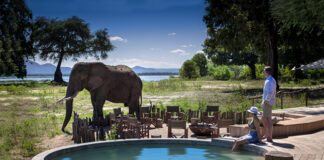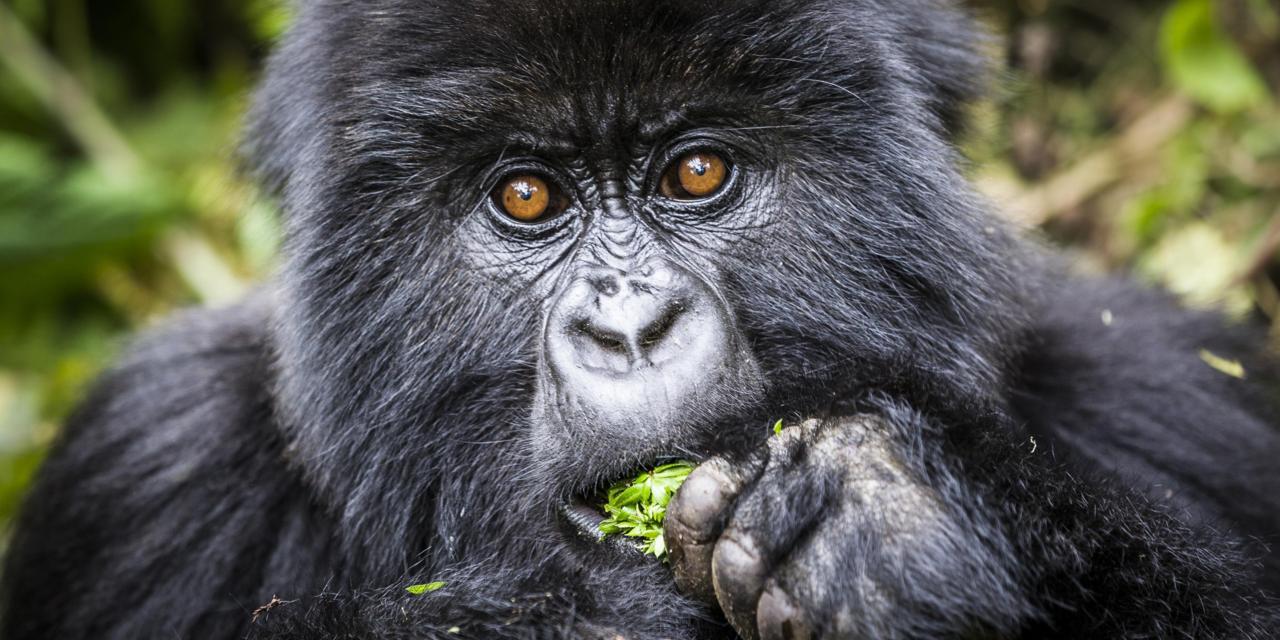Okavango Delta
The Okavango Delta is one of the most inspiring and awe-inspiring wilderness locations in Africa, if not the entire planet. The Delta is a truly unspoiled wilderness with terrain ranging from dry grasslands to swamps.
Safaris and game watching are the most popular activities in the park and possible animals to be sighted include cheetahs, zebra, giraffes, elephants, crocodiles and rhinos to name only a few.
Trips should be properly planned because, although the terrain here is always stunning, the seasons can dramatically affect your chances of seeing certain animals.
Moremi Game Reserve
The best game reserve in the African continent, this park has a lot going for it. It is the first reserve that was solely founded by local residents who were growing ever more concerned about natural and man-made threats to the local environment and wildlife.
Situated on the east side of the Okavango Delta, the reserve offers some of the most stunning scenery in the country and boasts an equally impressive ecosystem.
Many tourists choose to visit the park by self-drive campervan but the park also has a number of great campsites.
Gabane
This village is not far from Gaborone and is a great location for exploring the hills on foot. The village is surprisingly industrious and houses a number of small manufacturers such as glass works, metal and pottery on the aptly named Pelegano Village Industry.
The pottery factory in Gabane is particularly worth a visit due to its shop selling wares such as crockery, vases and other handcrafted decorative items. The most popular reason for visiting the village however is the great location for hiking.
Kasane
Kasane is situated between the Four Corners of Africa; where Botswana, Zimbabwe, Namibia and Zambia meet. It is a great spot to stay for visits to the Victoria Falls in Zimbabwe or Botswana’s own Chobe National Park.
The town’s own attractions include a huge Baobab tree that was once used as a prison due to its trunk that is so large a human can enter.
There is also a snake park that houses around 50 snakes from 17 different species. The town is also wonderfully situated for exploring the Chobe River.
Maun
Maun is often used by tourists as a stepping stone for the Okavango Delta but it has enough about it to merit a few nights stay.
The hotels, restaurants and tourist amenities here are some of the best in the country, largely due to the fact that the city is the main tourist stop in the country.
Whilst the town itself does not have much going for it, it still attracts a wide range of people from luxury safari travelers to volunteers. There are some great campsites that are located by the river, providing a great place to stay for a few nights.
Gaborone
The city of Gaborone is the largest in Botswana and also its capital. The modern buildings of Gaborone set against the tropical backdrops of this African nation are an unusual sight and despite its size, there are not too many reasons to visit the city.
The large residential areas are supplemented by a few decent hotels and restaurants. The modern feel of the city is reinforced by its lack of history but it is certainly paving the way for the countries future and for this reason it is a good place to experience the vibe of 21st Century Botswana.
Chobe National Park
This game reserve is the third largest in Botswana but it has one of the largest concentrations of rare game animals in the continent of Africa. The national park takes its name from the Chobe River which, at first glance is guaranteed to take your breath away.
As well as being a beautiful sight, the river supports an ecosystem of rare and exotic creatures including birds, elephants, lions, giraffes, baboons and buffalo.
During the winter season it is possible to see a herd of hundreds of elephants at a time; a truly once in a lifetime experience.
Francistown
The oldest town in Botswana is the second largest in the country. Francistown was built on gold mining before Europeans came and looked to prosper from them. In fact the town takes its name from a British man; Daniel Francis.
The main sights in the town include the Supa Ngwao Museum which documents the life and culture of the Kalanga people through various exhibits.
There is also a refuge for orphaned wild animals called Birds and Game Botswana. The town is currently experiencing an economic boom due to the recent resurgence of gold mining.
Central Kalahari Game Reserve
Wild, mysterious and amazingly vast, the Central Kalahari Game Reserve is a true wilderness that will give you the impression that you are exploring Africa alone. Incredible grasslands engulf you by day whilst the skies at night are as clear as the clearest in the world.
The rain in summer brings about countless wild beasts of all shapes and sizes including massive herds of animals like wildebeest and springbok.
Without so many animals in the harsher winter months, the main reason to visit the Central Kalahari Game Reserve is the unfathomable open terrain and true African wilderness.
Jwaneng
Built on the richest diamond mine in the world, the name Jwaneng literally means the place of small stones; these small stones are far more valuable than your average pebble however.
In just one year the mine produced over 13 million carats from a whopping 10.5 million tons worth of ore.
The town has amenities such as guest houses and restaurants. The mine here also supports the nearby Jwana Game Park which recently introduced two white rhinos.
Tsodilo Hills
The Tsodilo Hills appear almost suddenly out of the ground in the northwest Kalahari. These imposing rock formations of varying shapes and sizes are made to love even more impressive by the relative flatness of the surrounding land in the Kalahari.
The Tsodilo Hills are a UNESCO World Heritage site and are home to an amazing 4000 cave paintings spread out over 200 locations.
The cave paintings, along with other evidence, suggest that the hills were first inhabited over 30,000 years ago. The best time to visit is in the winter months as summer can be blisteringly hot.
Makgadikgadi Pans National Park
The name may be a mouthful but the reasons to visit Makgadikgadi Pans National Park are simple. The park stretches from the Boteti River and for this reason supports a vast and diverse ecosystem.
The wildlife is particularly varied in the dry season when animals come from miles around to the river which is the only source of water for a long way.
Gweta
Although mainly used as a stop off for tourists on the way to Muan or Kasane, Gweta is worth visiting for its namesake, the species of bullfrog that live in the area. The frogs hide themselves in the sand until it rains and they can emerge from their sandy slumber.
Other than these amazing creatures, there is little to see in Gweta, although the fuel station here is handy for pass through and will probably see you call in at some point during your time here.
Kang
Kang has a real travel vibe due to its location between Namibia, South Africa and Botswana. It is certainly not the most attractive place in Botswana, neither does it pack in the most attractions or sights but the town has amenities such as restaurants and guest houses which can be used as bases or as part of an onward journey in Botswana.
The restaurants in Kang are unlikely to be the most memorable meals during your time in the country but they are affordable and hearty.
Savuti
Savuti is one of the most popular safari destinations in Botswana due to its prime location in the very corner of the Chobe National Park. Throughout the year, all of the most popular and impressive animals (with the exception of rhinos) visit the region due to the river here.
The landscape here is large and somewhat barren but was once a super lake that filled a void in Northern Botswana.
The area has a wealth of luxury lodges for travelers looking to spend money for the best of the best. There are also great campsites for drivers through the area.








